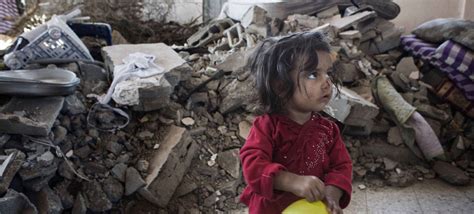Education Emergency in Pakistan Amid India-Pakistan Tensions: A Call for Resilient Learning Systems

As Pakistan faces an education emergency and rising tensions with India, school closures, digital gaps, and conflict zones disrupt learning. Explore how contingency planning and digital education can protect the future.
Introduction
Pakistan is navigating a dual crisis: a persistent education emergency caused by recurring natural disasters and political instability, and a sharp rise in tensions along the India-Pakistan border. As schools close due to floods, smog, and now cross-border military action, the future of millions of children hangs in the balance. The current India-Pakistan conflict, marked by airspace closures, suspended flights, and ground military activity, adds a new layer of uncertainty to an already fragile education system.
This blog explores how emergencies and conflict affect education in Pakistan, what strategic actions are needed, and how the government and society can respond proactively.
The State of Emergency in Pakistan’s Education System
Even before the latest India-Pakistan military tensions, Pakistan had declared an education emergency due to poor literacy rates, outdated infrastructure, and a large population of out-of-school children. Floods in 2022 destroyed over 30,000 schools nationwide, leaving millions without access to learning environments.
Now, border clashes and escalating geopolitical conflict have led to new closures in sensitive zones like Punjab and Kashmir. The India Civil Aviation Authority recently closed 24 airports across its northern belt—including Amritsar and Srinagar—due to security threats. These events mirror the growing education disruptions in Pakistan, especially near the Line of Control (LoC).
How Conflict Disrupts Education
The impact of war and military conflict on schooling is both immediate and long-term. In areas close to the India-Pakistan border, many schools have either closed or are being used as emergency shelters. Students in conflict zones face interrupted studies, trauma, and forced displacement, while teachers are unable to safely conduct classes.
These disruptions have intensified the digital divide in Pakistan. Most students in rural areas lack internet access, computers, or even mobile devices that can support online learning. While urban private schools may switch to online classes, millions in public education have no such options.
COVID-19 Lessons Ignored
During the COVID-19 school closures, Pakistan failed to implement a nationwide digital learning strategy. This failure is repeating now amid war threats and natural disasters. With many schools closed again—either due to smog, floods, or fear of shelling—students are once again missing out on vital learning time.
The absence of a contingency plan for emergencies in schools is glaring. Schools and education boards across Pakistan operate in silos, with no centralized mechanism to shift to remote learning or hybrid models when crises hit.
The Psychological Toll on Students
Besides academic loss, the mental health effects of emergencies cannot be overlooked. Whether it’s fear of bombings near the border, anxiety from displacement, or trauma from environmental disasters, students are under constant stress. Without counseling or support systems, these issues often go unaddressed.
In the current climate of India-Pakistan military conflict, many children report feeling unsafe at school or unable to concentrate due to fear of violence. If not managed properly, this will lead to a generation affected not only academically, but emotionally and socially.
What Can Be Done? Strategic Contingency Planning
To address this multi-pronged crisis, Pakistan must develop a long-term education contingency plan with the following components:
1. Disaster-Resilient Infrastructure
Reconstruct schools using flood-proof and earthquake-resistant materials, especially in disaster-prone and border regions.
2. Nationwide Digital Learning Platforms
Develop public digital portals, like a “Pakistan Learning Hub,” that offer curriculum-aligned videos, quizzes, and notes in multiple languages—available online and offline.
3. Emergency School Closure Policy
Create a standardized policy for when schools should close and how students will continue learning during emergencies. This must apply to all provinces and regions, including AJK and Gilgit-Baltistan.
4. Teacher Training
Train teachers in digital tools and emergency classroom management. Encourage them to use platforms like Google Classroom, WhatsApp, and TV-based learning during crises.
5. Mental Health Support
Every district should have mobile mental health teams for trauma-affected students, especially in border areas and flood-hit zones.
Government Action: Too Little or Just in Time?
The federal government’s recent declaration of an education emergency is a step in the right direction, but it lacks funding, policy detail, and execution frameworks. Meanwhile, the rising India-Pakistan tensions are creating further uncertainty in policymaking, with national focus shifting from development to defense.
It is crucial that education is not sidelined in times of war. Even during armed conflict, education is a human right. The global community must pressure both India and Pakistan to respect humanitarian zones, including schools and hospitals.
Global Lessons & Support
Countries like Syria, Ukraine, and Sudan have shown how digital platforms and community schooling can continue during wars. Pakistan must learn from such examples and seek international funding for education in emergencies, especially from organizations like UNICEF, Education Cannot Wait, and UNESCO.
Conclusion: Preparing for the Unpredictable
Whether it’s floods, pandemics, or India-Pakistan cross-border hostilities, education in Pakistan is constantly at risk. We cannot predict the next emergency, but we can prepare for it.
To safeguard the next generation, Pakistan must adopt a resilient, inclusive, and tech-enabled education model that works even in conflict zones and natural disasters. A strategic, fully funded contingency plan is no longer optional—it is a necessity.
